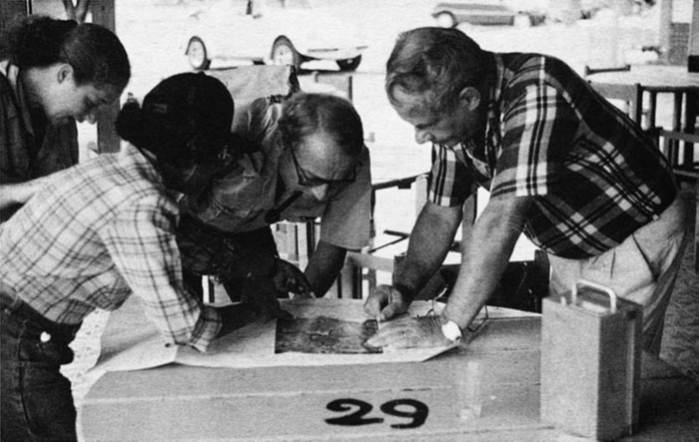
Welcome to Headquarters!
Think of the Headquarters as a center of operations, a gathering place, a space for the command and control of both humans and non-humans. From your specially created HQ, you have lots of key information and resources made available to you on a single webpage. As one of his GRADE 7 science students, Dr. Merritt suspects you will spend plenty of time this year making good use of your grade’s HQ.

"Science: it’s like magic, but real!"
Tweet by Derek Johnson (@derekjGZ), 26 June 2020
Course of Study
Our Units
7.1
Driving Question
7.2
Driving Question
7.3
Driving Question
7.4
Driving Question
7.5
Driving Question
7.6
Driving Question
7.7
Driving Question
7.8
Driving Question
7.9
Driving Question
7.10
Driving Question
2025/26
Grading
ACADEMIC MARKS
Dr. Merritt uses a standards-based, revision-driven, 10-point grading scale when assessing student work.
The numbers, letters, and word descriptors he associates with this grading system are provided below.
10 pts = Done/Exceeds = (A)
- The submitted work is done and exceeds the target standard(s).
9.2 pts = Done/Meets = (A-)
- The submitted work is done and meets the target standard(s).
8.5 pts = Done/Nearly meets = (B)
- The submitted work is done and nearly meets the target standard(s).
7.5 pts = Done/Approaches = (C)
- The submitted work is done and approaches the target standard(s).
6.5 pts = Done/Below = (D)
- The submitted work is done and falls below the target standard(s).
0 pts = Not Done/Well Below = (F)
- The submitted work is not done (or done and not submitted) and thus falls well below the target standard(s).
EFFORT MARKS
As published in the MS Student Handbook, TASIS uses 5-level scale for communicating student effort.
5 = Outstanding
4 = Very good
3 = Good
2 = Needs improvement
1 = Does not meet expectations
The TASIS MS established a policy in 2025/26 requiring all MS teachers to issue students Effort Marks every two weeks.
- In Veracross, these are called Effort (but they have no effect on students’ overall Academic science grade).
- In Veracross, students will also periodically see their Science Journal grades issued according to the 5-level Effort scale.
WEIGHTING
To calculate a student’s overall science grade, Dr. M weights his assignments as outlined below:
Classwork (30%)
This includes a variety of different assignment types–e.g., Investigations (INVs), Response Activities (RAs), etc.–assigned and completed during class.
- In Veracross, these are categorized as Classwork.
Formative Assessments (25%)
This consists of the class activity commonly referred to as an end-of-unit “Test.” Students can expect 10 end-of-unit tests during the 2025/26 school year.
- In Veracross, these are categorized as Test.
Preparatory Assessments (15%)
This consists of the class activity commonly referred to as an end-of-concept “Quiz.” Students can expect (approximately) 30 end-of-concept quizzes during the 2025/26 school year.
- In Veracross, these are categorized as Quiz.
Science Notebook (20%)
This includes all student-driven work regularly entered into the Science Notebook and aimed at showing–both visually and textually–students’ ongoing efforts to answer each unit’s Driving Question.
- In Veracross, these are categorized as Learner Portfolio.
Homework (10%)
This includes a variety of different assignment types (including Classwork) assigned for completion outside of school.
- In Veracross, these are categorized as Homework.
Science Journal (0%, but visible in Veracross)
This consists of the regular class activity commonly referred to as “Quick Writes” (QWs). Students can expect 1-3 QWs per week during the 2025/26 school year.
- In Veracross, these are called Effort.
Formative Assessments (0%, but visible in Veracross)
This consists of the regular class activity called “Diagnostic Questions” (DQs) most frequently completed with Exam.net.
- In Veracross, these are categorized as Formative Assessment.
2025/26
MS Homework Policy
B period
MONDAY
—
TUESDAY
Homework collection day
WEDNESDAY
—
THURSDAY
Homework collection day
FRIDAY
No science lesson
C & H period
MONDAY
—
TUESDAY
No science lesson
WEDNESDAY
Homework collection day
THURSDAY
—
FRIDAY
Homework collection day
2025/26
Academic Calendar
FALL SEMESTER
18 weeks
Start of semester – 28 Aug
Interim grades – 24 Sept
Midterm grades – 27 Oct
End of semester – 23 Jan
SPRING SEMESTER
18 weeks
Start of semester – 26 Jan
Interim grades – 13 Feb
Midterm grades – 23 Mar
End of semester – 3 Jun
NO SCHOOL DAYS
7 days
Friday, 10 Oct
Monday, 13 Oct
Friday, 7 Nov
Friday, 28 Nov
Friday, 19-20 Feb
Friday, 9 Mar
Monday, 16 Mar
MAJOR HOLIDAYS
2 breaks
Winter Holiday (Dec 20-Jan 11)
Spring Holiday (Mar 28-Apr 12)
MS SWISS EXPERIENCE
2 trips
Fall (Nov 3-6)
Winter (Feb 16-19)